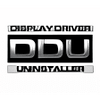A program that makes it easy to uninstall an old or defective driver for Windows
A program that makes it easy to uninstall an old or defective driver for Windows
Vote: (10 votes)
Program license: Free
Developer: Wagnard
Version: 7.0.8.3
Works under: Windows
Vote:
Program license
(10 votes)
Free
Developer
Version
Wagnard
7.0.8.3
Works under:
Windows
Pros
- Lightweight and no installation required
- Supports AMD, Intel, and NVIDIA drivers
- User-friendly interface and easy to navigate
- Minimal impact on system resources
- Facilitates risk management with system restore advice
Cons
- Interface may be too basic for advanced users
- System restoration point creation is manual
- Requires a certain level of caution to prevent unintended system changes
Display Driver Uninstaller (DDU) stands out as a streamlined utility for the complete removal of graphics card drivers from your system. Specifically designed to support drivers from major providers such as AMD, Intel, and NVIDIA, DDU is a must-have tool for troubleshooting driver issues or performing a clean installation.
Straightforward and Accessible
DDU distinguishes itself with its user-friendly approach, making it a valuable tool not only for computer experts but also for users with limited tech savviness. This utility does not necessitate a formal installation, thus sidestepping potentially complex setup procedures. Files can be easily extracted to any chosen location on a hard drive or moved onto a portable storage device like a USB flash drive, ensuring that DDU is conveniently deployable on various computers without a hitch.
The utility's ease of use is further enhanced by its minimal system requirements. DDU operates efficiently, using negligible amounts of system resources, meaning that your computer’s overall performance stays unaffected during its operations.
Clean and Informative User Interface
Upon launching the application, DDU immediately informs users of its intention to modify Windows registry settings, advising the creation of a system restore point. This proactive notification is crucial for users to safeguard their system configurations, providing an essential safety net should any instability arise post cleanup.
DDU's interface is refreshingly uncluttered, featuring a single-window layout that is straightforward to navigate. The software explicitly displays your current Windows version and allows for an intuitive selection of the graphics driver to be removed. Moreover, the options are well-defined, empowering users to direct the utility to execute a clean and reboot process, to clean without rebooting the system, or to clean and power the computer down entirely.
Powerful Removal Capabilities
The core function of DDU is to meticulously purge all remnants of graphics drivers from your system. This thorough removal ensures that outdated or problematic drivers do not linger and interfere with the installation of new updates or the functioning of alternative drivers. For users experiencing driver-related glitches or intending to upgrade their graphics card, DDU offers a robust solution for driver removal that surpasses the built-in uninstallers provided by the operating systems or the driver software itself.
DDU also offers language support for users around the globe, further cementing its accessibility. The tool’s responsiveness is commendable, with prompt execution of commands and quick navigation despite the extensive actions it performs in the background.
Conclusion
Display Driver Uninstaller (DDU) is a remarkably utilitarian tool for any individual needing to remove and clean out display drivers from a Windows system. Its simplicity does not compromise on efficiency, delivering a potent solution for cleaning up driver installations.
Pros
- Lightweight and no installation required
- Supports AMD, Intel, and NVIDIA drivers
- User-friendly interface and easy to navigate
- Minimal impact on system resources
- Facilitates risk management with system restore advice
Cons
- Interface may be too basic for advanced users
- System restoration point creation is manual
- Requires a certain level of caution to prevent unintended system changes




